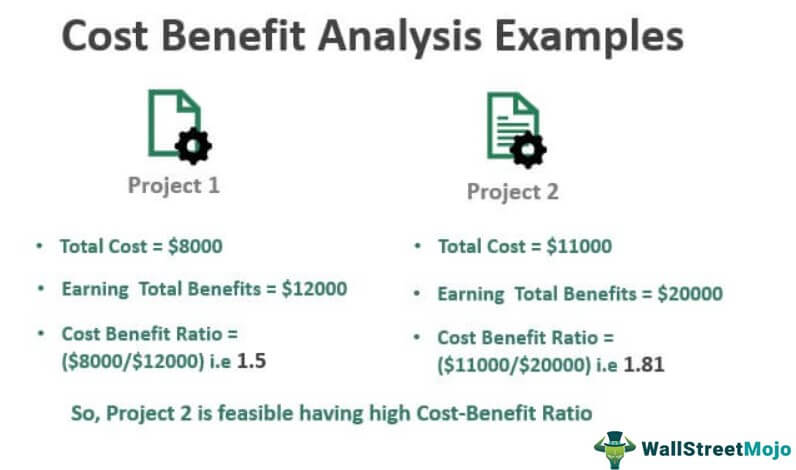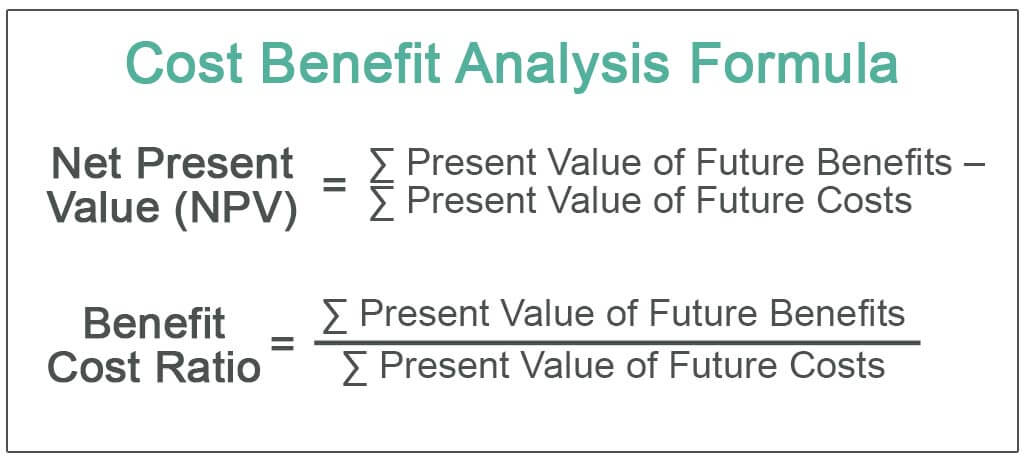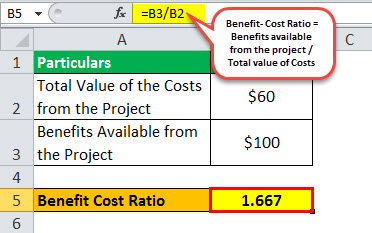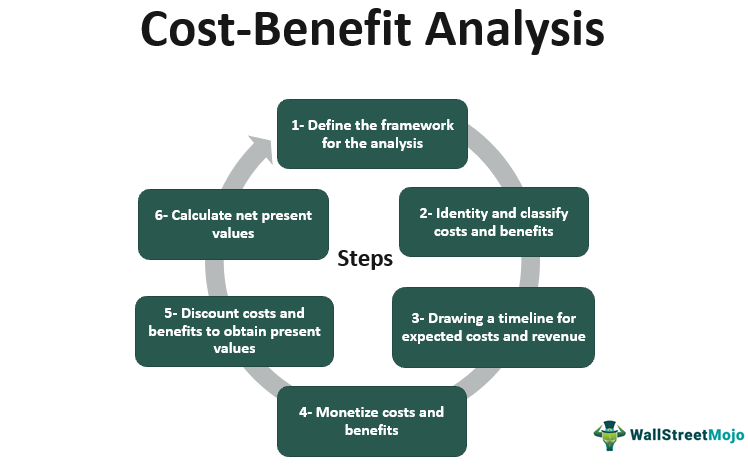Describe the Purpose of Using Cost Benefit Analysis
Basically Cost Benefit Analysis Methodology serves two purposes. The objective function of CBA is the establishment of net social benefit NSB which can be expressed as NSB Benefits Costs.

Cost Benefit Analysis Examples Top 3 Cba Examples With Explanation
Weighing pros and cons.

. Benefit-Cost Analysis BCA is a method that determines the future risk reduction benefits of a hazard mitigation project and compares those benefits to its costs. The cost-benefit analysis compares the costs and benefits of a project and then makes a decision on whether or not to proceed with the project. It balances positive and negative outcomes to help people make informed decisions List the benefits of using a budget.
The purpose of this analysis is to describe operating costs surrounding a nurse-driven freestanding community clinic and to calculate quality of. The purpose of cost-benefit analysis in project management is to have a systemic approach to figure out the pluses and minuses of various paths through a project including transactions tasks business requirements and investments. Which best describes the decision-making process when doing a cost-benefit analysis.
On the other hand if the cost incurred in that programme is greater that the benefit received from it it is termed as negative benefit. They are В СI В С В С and BC where В and С refer to benefits and costs respectively I relates to direct investment and Δ is incremental or marginal. DISCOUNTING IN COST-BENEFIT ANALYSIS 363 tive public investments requires using the public sectors cost of borrowing as a discount rate along with the use of the shadow price of capital to adjust for capital market distortions.
It goes on to examine both. To make decisions that maximize benefits The purpose of using cost-benefit analysis is to determine the options that provide the best approach for the practice and adoption in terms of cost. The use of CBA is required by law and regulation throughout the federal government for decid-.
Cost benefit analysis is useful as a tool for making project decisions based on financial considerations. The cost benefit analysis states that if the benefit arrived from the pollution elimination programme is greater than the benefit received from it it is called positive benefit. The outcomes of cost-benefit analyses are generally rendered in per-dollar values comparing the cost of action relative to the cost of inaction.
Applicants and subapplicants must use FEMA-approved methodologies and toolssuch as the. Two major benefits are improving performance and minimizing cost of processing of system. A project is considered cost-effective when the BCR is 10 or greater.
The cost-benefit analysis gives you options and it offers the best approach to achieve your goal while saving on investment. To make decisions that maximize benefitsThe purpose of using cost-benefit analysis is to determine the options that provide the best approach for the practice and adoption in terms of cost savings. Cost benefit analysis also known as benefit cost analysis is a tool for comparing the costs of a decision with its benefits.
The productivity of each fisherman falls as N the number of fishermen rises. Cost benefit analysis is a process used primarily by businesses that weighs the sum of the benefits such as financial gain of an action. Before starting a project recognize that.
Analyze potential risks and impacts. What economic term would you use to describe the fish in the town lakes. The result is a Benefit-Cost Ratio BCR.
Which best describes the purpose of using cost-benefit analysis. The projects costs and benefits are measured in monetary terms after adjusting for the time value of money thus providing a true picture of the costs and benefits. Cost-benefit analysis is a vital component of the decision-making process for governments and not-for-profit organizations.
Cost-benefit analysis involves a company analyzing the cost of a particular plan like a marketing campaign or purchase like new equipment and then comparing it to the expected business. Cost-benefit analysis CBA is a technique used to compare the total costs of a programmeproject with its benefits using a common metric most commonly monetary units. A system is also expected to provide health benefits.
A cost-benefit analysis is simply a systematic approach that individuals and organizations can use to analyze the risks and rewards of a project and select the optimal solution. As a technique it is used most often at the start of a programme or project when. To select an investment or a project by comparing their benefits over cost ratios.
Cost-Benefits Analysis CBA grew out of the research programs of the RAND Corporation and similar organizations in the field of defense research in the period shortly after World War II Casebeer Raichle Kristofco Carillo 1997. First task is to identify each benefit and then assign some value to it for purpose of cost benefit analysis. Describe the purpose of using cost-benefit analysis Cost-benefit analysis is about maximizing benefits and minimizing costs.
The tool is often used in the business world where the decision can be anything from developing a new product to changing an existing process. This enables the calculation of the net cost or benefit associated with the programme. To verify that an investments or a projects expected benefits are more than its costs.
There are four benefit-cost criteria. However given the inherent subjectivity of valuation of intangibles the outcome of a cost benefit analysis is not absolute. For example an organization determines both the average cost to vaccinate a single adult and the total average cost of.
Benefits may be tangible and intangible direct or indirect. Even when the projects benefits outweigh the costs it is essential toidentify analyze and weigh any risks.

Cost Benefit Analysis Formula How To Calculate Examples

Cost Benefit Analysis Examples Top 3 Cba Examples With Explanation

Cost Benefit Analysis In A Nutshell Analysis Economic Analysis In A Nutshell

Comments
Post a Comment